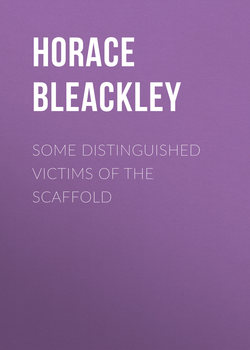Читать книгу Some Distinguished Victims of the Scaffold - Bleackley Horace - Страница 4
THE LOVE PHILTRE
THE CASE OF MARY BLANDY, 1751-2
Notes
ОглавлениеNote I. – In recent years the guilt of Cranstoun has been questioned. Yet a supposition that does not explain two damning circumstances must be baseless:
(a) In the first place, one of his letters to Miss Blandy, dated July 18, 1751, was read by Bathurst in his opening speech. Although the reports of the trial do not tell us that the note was produced in court, or that the handwriting was verified, it cannot be presumed that the Crown lawyers were guilty of wilful fabrication. However strange it may appear that this letter alone escaped destruction, it is improbable that Miss Blandy invented it. Had she done so its contents would have been more consistent with her defence. As it stands it is most unfavourable to her. Therefore, in the absence of further evidence, we must conclude that the letter is genuine, and if genuine Cranstoun was an accomplice.
(b) In the second place, the paper containing the poison which was rescued from the fire, is said by the prosecution to have borne the inscription in Cranstoun’s handwriting, ‘Powder to clean the pebbles’ If this had been counterfeit, Miss Blandy would have had no object in destroying it, but would have kept it for her purpose.
At any cost Lord Cranstoun must have been anxious to remove the black stain from his scutcheon. That this was impossible the fact that it was not done seems to prove. Indeed, if Captain Cranstoun had been ignorant of the crime, he could have proved his innocence as soon as Miss Blandy was arrested by producing her letters, which, granting this hypothesis, would have contained no reference that would have incriminated him. That she had written a great deal to him was shown in evidence at the trial by the clerk Lyttleton.
For these reasons it is impossible to accept the conclusion of the writer of Cranstoun’s life in the Dic. Nat. Biog. (who has adopted the assertion in Anderson’s Scottish Nation, vol. i. p. 698), that “apart from Miss Blandy’s statement there is nothing to convict him of the murder.”
Note II. – Anderson’s statement that “there does not appear to be any grounds for supposing that Captain Cranstoun was in any way accessory to the murder,” shows that he had not a complete knowledge of the facts at his disposal, or that he did not weigh them with precision. Miss Blandy’s intercepted letter to her lover affords a strong presumption of his connivance, and her destruction of his correspondence suggests that it contained incriminating details. That these two actions were subtle devices to cast suspicion upon Cranstoun cannot be maintained with any show of plausibility, for in this case Miss Blandy, if dexterous enough to weave such a crafty plot, must have foreseen its exposure, and with such exposure her own inevitable ruin, when to prove that he was not an accomplice her lover had produced the letters she had written to him. Thus to support such an assumption it must be shown that Cranstoun had previously destroyed every particle of her handwriting, and that she was aware of the fact. Of such an improbable circumstance there is, of course, no evidence.
Note III. – “Old Benchers of the Middle Temple,” Essays of Elia. The relative of Miss Blandy, with whom Mr Samuel Salt was dining when he made the unfortunate remark which Lamb repeats, may have been Mr Serjeant Henry Stephens of Doctors’ Commons, who was her maternal uncle.
Note IV. – The date of Miss Blandy’s birth is not given in the Dic. Nat. Biog. From the register of Henley Parish Church it appears that she was baptized on July 15, 1720.
